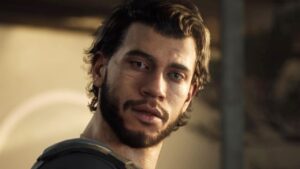The filmmakers behind the original Jurassic Park series adhered to a strict rule: treat dinosaurs as animals, not monsters. “Normally, we yell at each other if somebody says ‘monster’ instead of ‘animal,’ because they should always be motivated as animals are,” David Koepp, screenwriter of the first two movies, told Entertainment Weekly. However, the latest installment, Jurassic World Rebirth, which is the seventh film in the franchise, takes a different approach. “These things are monsters because someone made them,” Koepp, who also penned the script for the latest entry, explained regarding the gene-spliced mutant hybrids.
Picking up five years after 2022’s Jurassic World Dominion, the film follows Scarlett Johansson’s Zora Bennett, a “situational security” expert; Jonathan Bailey’s Dr. Henry Loomis, a paleontologist; and Mahershala Ali’s Duncan Kincaid, captain of their boat, as they lead a team to Ile Saint-Hubert. Their mission is to extract DNA from the three most colossal dinosaurs of land, sea, and sky to engineer a life-saving drug for a pharmaceutical company. However, they encounter monstrously mutated dinosaur experiments left behind by the long-abandoned research facility from the original Jurassic Park theme attraction.
Reimagining Dinosaurs: From Animals to Monsters
The shift in portrayal from animal to monster is a significant narrative turn in Jurassic World Rebirth. “You’re departing freely from the fossil record and just making stuff up,” Koepp said of the creative process behind the new dinosaur designs. This departure is evident in the creation of hybrid creatures like the Indominus Rex seen in previous Jurassic World films. Koepp noted, “They were trying to crossbreed stuff that was bigger, scarier, freakier. That can’t always have gone well. Genetic mutation takes a few tries.”
Meet the New Dinosaurs
Distortus rex
The Distortus rex, or D. rex, is a product of reckless genetic engineering. Standing at 26 feet tall and weighing about 20,000 pounds, the D. rex is a failed attempt to enhance a Tyrannosaurus rex with DNA from various animals. Director Gareth Edwards drew inspiration from iconic cinematic creatures like the Rancor from Star Wars and the Xenomorph from Alien. “In my mind, it was basically a T. rex cranked up to 15, and it had gone wrong because of that,” Edwards told EW.
“Clearly they should have stopped about 20 versions ago because it just got worse and worse and worse,” Koepp commented on the D. rex’s development.
Mutadon
The Mutadon is another terrifying creation, a cross between a Velociraptor and a winged pterosaur. At 6-foot-7 and 550 pounds, this creature posed a design challenge for the filmmakers. “We tried thousands of things,” Edwards recalls, noting the lengthy process before settling on the final design.
The Colossal Trio
The film’s plot centers on the pursuit of three massive dinosaurs: the Mosasaurus, Titanosaurus, and Quetzalcoatlus.
- Mosasaurus: This 100-feet-long, 40,000-pound aquatic dinosaur is reminiscent of the killer whale in its speed and ferocity. Director Steven Spielberg’s Jaws served as a significant influence for the underwater sequences.
- Titanosaurus: Known for its immense size, the Titanosaurus is an herbivore with legs akin to Redwood trees. Edwards describes it as “a Brachiosaurus on a massive scale.”
- Quetzalcoatlus: With a 30-foot wingspan, this flying giant is as large as a school bus, making DNA extraction from an egg a safer option for the team.
Returning Favorites and New Additions
The Jurassic World Rebirth also reintroduces the Spinosaurus, a fan-favorite from 2001’s Jurassic Park III. These evolved creatures can now hunt by both land and sea, complementing the Mosasaurus in their predatory prowess.
In contrast to these formidable creatures, Jurassic World Rebirth introduces a more endearing dinosaur, Dolores the Aquilops. This petite, candy-loving cousin of the Triceratops is already a hit with young audiences, thanks to its playful interactions with Isabella Delgado, portrayed by Audrina Miranda.
Looking Forward
With its blend of nostalgia and innovation, Jurassic World Rebirth promises to captivate audiences with its thrilling narrative and groundbreaking creature designs. As the film opens in theaters on July 2, fans can look forward to exploring the boundaries of genetic engineering and the ethical dilemmas it presents.
The film’s exploration of genetic manipulation and its consequences reflect broader societal concerns about scientific advancements and their potential impacts. As these themes continue to resonate, Jurassic World Rebirth offers both a cautionary tale and a thrilling cinematic experience.





